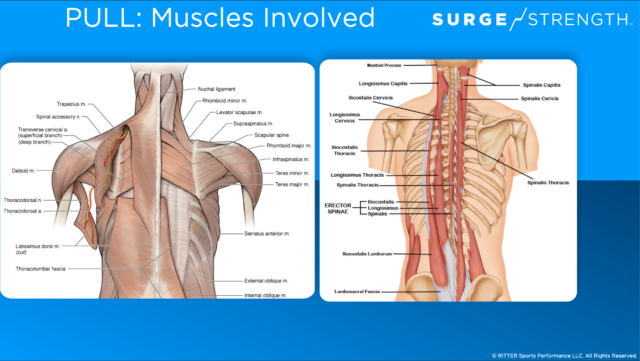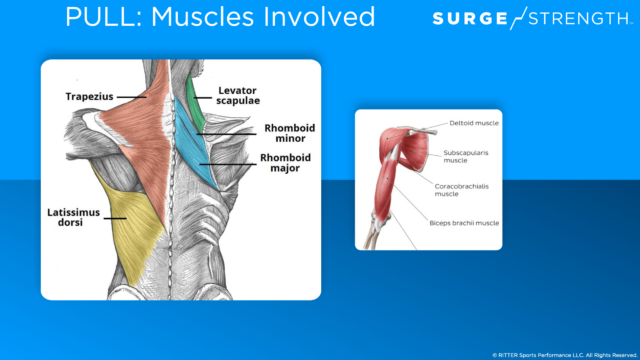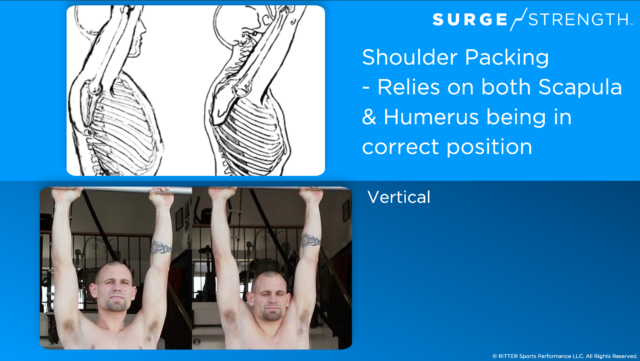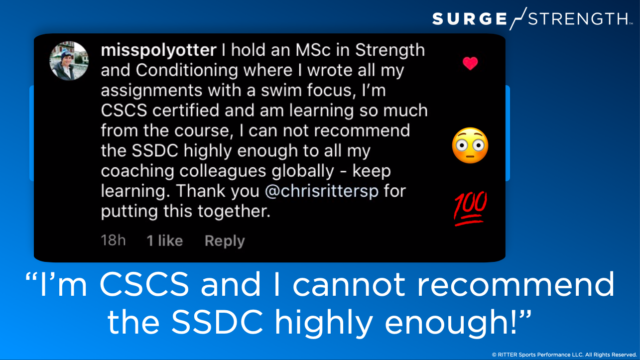Dryland exercises for a stronger pull can become a swimmer’s secret weapon in order to translate their strength into the water. This time of year, swimmers are training hard which means racking up yardage in the pool. Because of this, you might notice your athletes develop nagging shoulder pain, poor posture, and maybe even feeling the effects of burnout. The more they swim, the worse it gets. Thankfully, there’s a solution. In order to counterbalance the abundance of overhead movements that inevitably come with the sport of swimming, we recommend you implement progressive pulling exercises into your dryland plan.
Types of Pulling Exercises:
There are two types of pulling exercises: vertical and horizontal. Vertical pulling (think pull-up) requires the hips and head to move linearly or remain in line as the load is transferred through the back, arms, and shoulders. Typically, vertical pulls are performed in a seated or standing position and require some type of external overhead resistance.

Horizontal pulling (think rows) challenges the back and shoulders to remain engaged throughout the movement. Theses are great at building strength in the posterior chain and promoting balance in your dryland plan. The primary way you’ll accomplish horizontal pulls are in a seated, standing, or prone position.

Posture Pre-requites for Dryland Exercises for a Stronger Pull
Packing the Shoulder
Packing the shoulder simply means retracting the upper back and shoulders into an active position. In other words, pack your shoulder before each movement by bringing the shoulder back and down. This is especially important in exercises like the pull-up. Shoulder packing properly engages all the muscles needed for a movement. It also prevents winging at the shoulder blades. Otherwise, the swimmer lifts dead weight and overloads the front of the shoulder instead.

Pulling Posture into Place
Due to the nature of swimming, there should be at least a 2:1 ratio of pulls to pushes within a dryland program. This means that for every pushing or pressing exercise, there should be two pulling exercises in the plan. We do this to counterbalance the volume of overhead stroking swimmers experience in the pool.
If pulling exercises are lacking from dryland, swimmers are likely to develop upper cross syndrome. Upper cross syndrome results in weak neck and shoulder stabilizers as well as tight upper back and pectoral muscles. As a result, you will see a forward head posture and winging in the scapula. If swimmers continue to swim or partake in dryland, they will encounter shoulder pain.

- Upper cross syndrome – puts the back at a mechanical disadvantage due to the weak and stretched muscle fibers around the scapula. Therefore, implement pulling exercises that excite the weak posterior scapular muscles and restore shoulder function. Below, we break down our favorite horizontal and vertical pulls.
Dryland Exercises for a Stronger Pull: SURGE Strength’s Top 3
1) The Pull-Up
The pull-up is an essential vertical pulling exercise for swimmers. It can easily be scaled to fit the individual needs of your team. Level 1 is the flexed arm hang. During this exercise, swimmers perform an isometric muscle contraction where they actively hang from the bar for the duration of the bout. This exercise strengthens the muscles needed to perform a pull-up.
- Isometric – muscular contraction where fibers are working to hold a position
Level 2 is a traditional pull-up. There are many different grips you can prescribe to progress the pull-up. Whichever you choose, make sure the athlete is packing the shoulder before attempting any reps (see our paragraph on how to do this above). For more information on pull-ups check out our previous article: link pullup article here.
Once athletes can perform 15 pull-ups in a row, they are ready for level 3. Level 3 involves loading the pull-up. Add resistance to the pull-up by wearing a weight vest or simply holding a dumbbell between the feet.
2) The Dumbbell Row
Dumbbells are a great tool for training the horizontal pulling movement because they work the shoulder stabilizers of each arm separately. This helps with any muscle imbalance and challenges the shoulder to constantly maintain a proper position. Start with our level 1 exercise: the batwing. This movement teaches the athlete what a row should feel like. Emphasis rowing to a full range of motion by bringing the elbow all the way back past the ribs.
Next, progress to a bent over dumbbell row. This level 2 exercise includes pulling a load toward the body in a hinge position. Athletes get the benefit of the horizontal pull along with the benefits of performing a hinge.
3) Medicine ball Slam
This exercise is our honorable mention. In this exercise, swimmers start with a ball overhead and powerfully pull it to the ground. This motion mimics pulling the body through the water. However, it includes the benefits of packing the shoulder and working muscles evenly around the shoulder joint. Progress this movement by starting in different stances such as half kneeling or on one foot. Otherwise, simply increase the weight of the ball.
Pulling exercises should encompass a large chunk of your time in dryland. Vertical and horizontal pulls promote posture, reduce the risk of injury, and make the swimmer faster through their stroke. We recommend controlled, quality reps with proper range of motion rather than performing a variety of careless rows and pulls. With a proper pulling protocol, you will notice improvement in your swimmer’s technique, postural discomfort, and strength in the water.
This week’s Technique Tuesday will feature beginner pulling exercises. Check out @surge.strength on Instagram for more dryland training.
NEW – AT HOME DRYLAND WORKOUT
GET IT FOR FREE BY ENROLLING IN THE SURGE STRENGTH ACADEMY
JOIN OTHERS FROM AROUND THE WORLD THAT ARE
BECOMING SURGE STRENGTH DRYLAND CERTIFIED (SSDC)

BECOME SURGE STRENGTH DRYLAND CERTIFIED (SSDC)
BUILD BETTER ATHLETES TO GENERATE FASTER SWIMMERS
Courtesy of SwimSwam’s exclusive dryland training partner, SURGE Strength.
SURGE Strength, a strength training brand created by Chris Ritter, CEO of RITTER Sports Performance, aims to build better athletes and faster swimmers through dryland programs, and coaching education.







